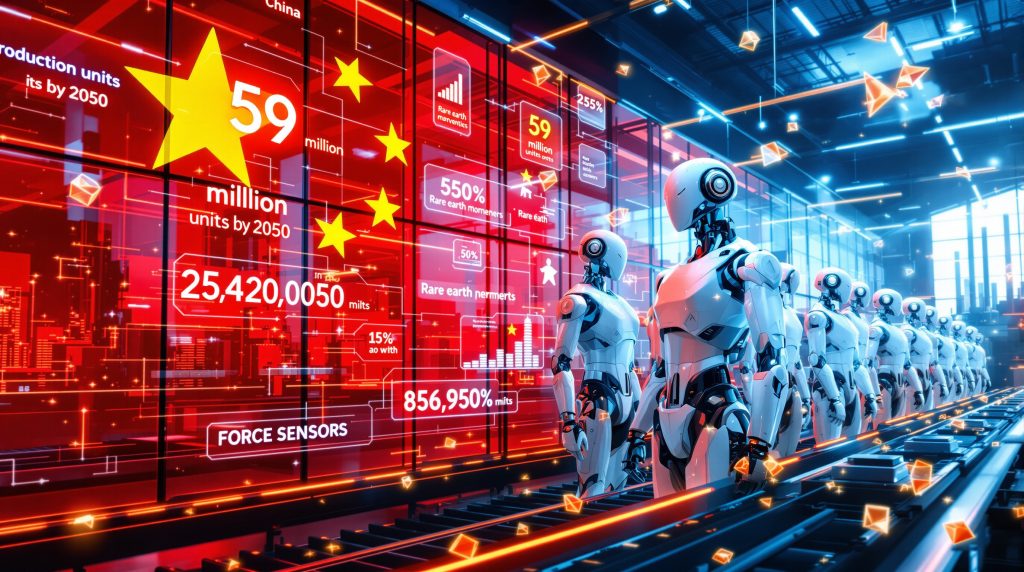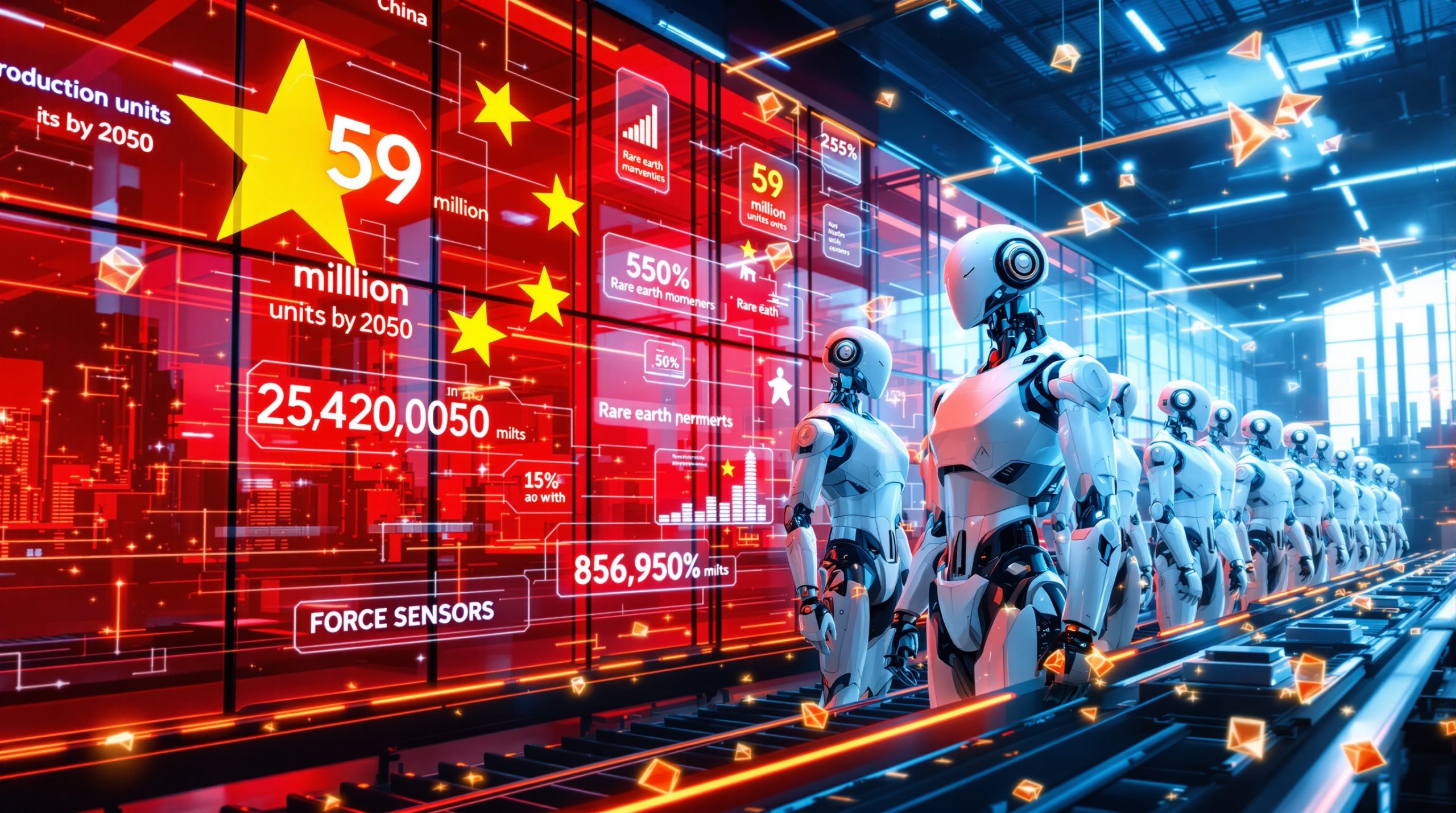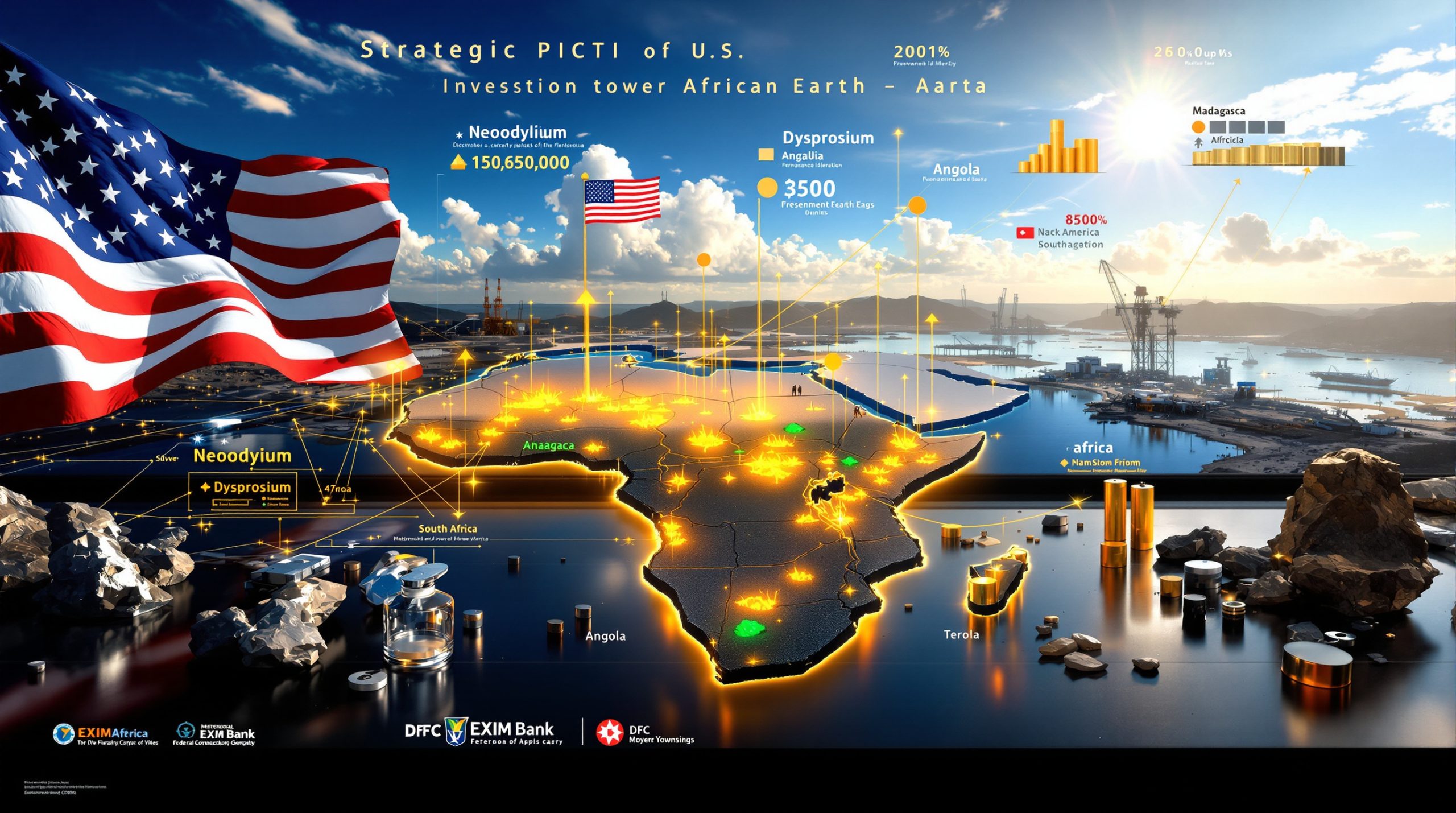China's lens humanoid robot expansion represents a strategic convergence of advanced manufacturing capabilities and national economic imperatives. As demographic pressures intensify and labour costs rise, this technological revolution positions China at the forefront of industrial transformation. Furthermore, the integration of comprehensive policy frameworks with substantial capital investments creates unprecedented opportunities that will reshape global supply chains and competitive dynamics across multiple sectors.
China's Strategic Framework for Robotics Dominance
Industrial Policy Integration and National Development Goals
China's robotics expansion operates within the comprehensive framework of the Made in China 2025 initiative, launched in 2015 to transform the country's manufacturing capabilities through indigenous innovation and domestic supply chain development. This policy framework identifies robotics and artificial intelligence integration as priority technology areas essential for national competitiveness.
The 14th Five-Year Plan (2021-2025) further emphasises robots and autonomous systems as critical components of national development strategy. Government support mechanisms include direct funding through state development banks, with the China Development Bank allocating approximately $50 billion to advanced manufacturing sectors between 2021 and 2024.
Key Policy Implementation Mechanisms:
- Tax incentives providing R&D expense deductions up to 200% for robotics manufacturers
- Industry consolidation support through preferential financing for vertical integration acquisitions
- Government procurement programmes creating guaranteed market demand for domestic robotics companies
- Technology transfer restrictions protecting domestic intellectual property development
China's working-age population (15-64 years) declined by 5.57 million in 2024, marking the third consecutive year of contraction. Manufacturing wage growth in eastern China averaged 6-8% annually from 2020-2024, intensifying automation pressures across industrial sectors.
Global Competitive Positioning Against Established Leaders
Japan's robotics industry generated $18.2 billion in revenue during 2023, with humanoid robots representing an emerging but rapidly expanding segment. Germany maintains 38% of the global industrial robot export market share as of 2024, while South Korea's robotics sector achieved $10.7 billion in market value.
However, the US-China trade war impacts have created additional complexities for technology transfer and supply chain management. China's demographic pressures create unique advantages in robotics adoption that competing nations with different demographic profiles cannot easily replicate.
Lens Technology's Vertical Integration Revolution
Component Manufacturing Consolidation Strategy
China's Lens Technology represents a comprehensive approach to robotics manufacturing through vertical integration across critical component categories. The company's 2025 production targets include 3,000+ humanoid robot units and 10,000+ quadruped robots, with plans to double core component production capacity in 2026.
Lens Technology's Integrated Manufacturing Portfolio:
| Component Category | Current Capability | 2026 Target Scale | Strategic Advantage |
|---|---|---|---|
| Joint Motors | Full production | 2x capacity | Precision control optimisation |
| Structural Parts | Metal fabrication | Doubled output | Durability enhancement |
| Six-Axis Force Sensors | Complete systems | Enhanced sensitivity | Advanced tactile feedback |
| Head Modules | Assembly operations | Mass production | Human-robot interaction |
The company's six-axis force sensor systems measure multi-directional mechanical stress across X, Y, Z axes plus rotational components. This enables humanoid robots to calibrate grip pressure and detect object properties with precision requirements below 10 Newtons.
Supply Chain Risk Mitigation Through Domestic Control
Vertical integration in humanoid robotics manufacturing addresses three critical vulnerabilities: international supply chain sanctions risks affecting component imports, intellectual property protection for proprietary actuator designs, and quality consistency requirements for safety-critical systems.
Global industrial robot component suppliers typically achieve 15-20% supply chain cost reduction through vertical integration. They also improve quality metrics by 31% over six-year implementation periods. Tesla's battery cell manufacturing integration serves as a relevant precedent, reducing component costs 47% between 2015 and 2021 while enhancing quality control.
Joint motor integration enables both internal supply for assembled units and component sales to third-party robot manufacturers. Consequently, this creates revenue diversification beyond finished robot sales, positioning Lens Technology as both a systems integrator and component supplier within China's expanding robotics ecosystem.
Critical Material Dependencies and Resource Implications
What Are the Permanent Magnet Demand Requirements?
Each humanoid robot requires 3.5-4kg of rare earth permanent magnets, primarily composed of neodymium and dysprosium in permanent magnet applications. Industry projections estimate China's lens humanoid robot expansion output reaching 59 million units by 2050, creating cumulative rare earth demand of 206,500-236,000 tonnes over the deployment period.
This relationship between technological advancement and resource requirements is closely connected to broader critical minerals and energy security considerations. The projected demand represents approximately 9.4-10.7 years of current global neodymium production at 2024 rates, assuming linear production increases.
Critical Material Supply Analysis:
- Current global neodymium capacity: ~75,000 tonnes annually
- Projected 2050 robotics requirement: 4,130-4,720 tonnes annually for humanoid robots alone
- China's rare earth refining dominance: 85-90% of global capacity
- Neodymium-dysprosium magnet production: 18,000-22,000 tonnes annually worldwide
Strategic Resource Control and Pricing Dynamics
China's dominant position in rare earth refining creates strategic dependency concerns for competing nations as humanoid robot scaling accelerates. Permanent magnet demand from robotics—currently marginal relative to wind energy (40% of rare earth element demand) and automotive applications (15%)—will represent material incremental demand by 2035.
Historical rare earth price volatility demonstrates correlation with Chinese production policy shifts. The 2010-2011 price surge resulted in 700% increases in neodymium oxide pricing following Chinese export quota reductions. This establishes precedent for supply-driven price manipulation.
Resource Security Calculation: Wind turbine permanent magnets consume 18,000-22,000 tonnes of rare earth elements annually (2024). Humanoid robot scaling could match wind energy demand profiles by 2040, doubling pressure on existing supply chains.
Moreover, advances in battery recycling breakthrough technologies may help alleviate some resource constraints. Permanent magnet applications in humanoid robotics require specific performance characteristics for optimal operation.
Market Adoption Pathways Across Sectors
Manufacturing and Industrial Integration
Global electronics assembly labour costs increased 45-60% since 2015 in coastal China manufacturing regions. This creates compelling economic rationale for humanoid robot deployment. Quality defect rates in manual assembly average 2.5-4.2% compared to robotic systems achieving 0.8-1.2% defect rates.
Humanoid robots address micro-assembly tasks requiring 12-16 degrees of freedom in hand/wrist mechanisms for component insertion. Electronics manufacturing represents near-term deployment focus due to established precision standards and clear return on investment calculations over 3-5 year payback periods.
Industrial Deployment Requirements:
- Manufacturing assembly: Component insertion, wire routing, precision tasks
- Quality control: Visual inspection, measurement validation, defect detection
- Hazardous operations: Chemical handling, high-temperature environments, contamination-prone areas
- 24/7 operations: Continuous production without shift changes or fatigue factors
Healthcare and Elderly Care Applications
China's elderly care sector faces critical workforce shortages as the 65+ population grows from 280 million (2024) to projected 365 million by 2040. Current caregiver shortage requires 5.4 million care workers by 2030, while current supply totals only 2.8 million qualified personnel.
Average home care costs range 4,500-6,500 RMB monthly, while robot-assisted care systems project 3,200-4,000 RMB monthly costs at commercial scale. Healthcare robotics adoption accelerates in sectors with acute labour scarcity, with elderly care facilities reporting 40-60% efficiency improvements in patient monitoring and medication distribution.
Service Sector and Consumer Market Development
China's hotel industry employs 1.2 million workers (2024) with annual turnover rates of 35-45%. This creates structural demand for automation solutions. Robot-enabled hotels demonstrate 12-18% labour cost reductions while improving guest satisfaction scores by 8-12 percentage points.
The hospitality sector represents 2.8 million hotel rooms in China (2024), with robot deployment potential in 30-40% of mid-range establishments. This creates market potential for 840,000-1.1 million units over long-term adoption cycles.
Global Production Scale Comparisons
What Are China's Manufacturing Volume Projections?
Lens Technology's production strategy targets ranking among top global manufacturers by 2027. The company's specific capacity expansion doubling is planned for 2026. The company's 2025 shipments of 3,000+ humanoid units represent a component of broader Chinese industry output scaling across multiple manufacturers.
Partnership agreements demonstrate industry consolidation trends:
- Dobot Robotics: 10,000-unit quadruped robot manufacturing agreement
- XPENG-W: Component supply integration for IRON humanoid platform
- Zhipu Robotics: Full-series production partnerships exceeding 10,000 units in 2026
International Competitive Landscape Analysis
Global Humanoid Robot Production Estimates (2025-2026):
| Region/Focus Area | 2025 Production | 2026 Targets | Primary Applications |
|---|---|---|---|
| China (Lens + Partners) | 13,000+ units | 26,000+ units | Industrial/Service/Commercial |
| Japan (Combined Manufacturers) | ~2,500 units | ~4,000 units | Research/Healthcare/Precision |
| US (Combined Programs) | ~1,200 units | ~2,500 units | Defense/Research/Specialised |
| Europe (Combined Initiatives) | ~800 units | ~1,800 units | Healthcare/Research/Safety |
Japan's robotics development emphasises precision applications and healthcare integration, while US programmes focus heavily on defence and specialised research applications. Furthermore, European initiatives prioritise safety standards and healthcare deployment, reflecting regulatory environments that emphasise risk mitigation over rapid scaling.
Additionally, developments in industry innovation trends suggest that manufacturing capabilities will continue evolving rapidly across all regions.
Investment Strategies and Partnership Formations
Strategic Alliance Development Patterns
China's humanoid robotics industry demonstrates consolidation through strategic partnerships that combine manufacturing scale with technological specialisation. Lens Technology's agreements with multiple robotics developers create integrated supply chains reducing component dependency risks while enabling rapid capacity scaling.
Vertical integration versus specialisation trade-offs reflect broader strategic considerations. However, the benefits of manufacturing integration include cost control, quality assurance, intellectual property protection, and supply chain resilience.
Risks of Over-Integration:
- Capital intensity: Higher upfront investment requirements for facility expansion
- Technology evolution: Risk of internal capabilities becoming obsolete
- Market flexibility: Reduced ability to adapt to changing component specifications
- Opportunity costs: Resources committed to manufacturing versus R&D investment
Capital Investment Requirements and Financial Projections
Multi-billion yuan facility expansions require substantial capital commitments with uncertain return timelines. This is due to rapidly evolving technology landscapes. Revenue projections reaching hundreds of millions yuan depend on successful market adoption across targeted sectors.
Break-even scenarios vary significantly based on production volume achievement, market adoption rates, component pricing stability, and regulatory framework development. Additionally, concerns about critical raw materials supply affect long-term planning considerations.
Labor Market and Economic Transformation Implications
What Is the Workforce Displacement Risk?
Humanoid robot deployment creates differential impacts across employment categories. Manufacturing assembly positions face highest displacement risk due to robots' dexterity capabilities. However, maintenance, programming, and human-robot collaboration roles represent emerging employment opportunities.
High Risk (50-80% displacement probability):
- Assembly line workers in electronics and precision manufacturing
- Quality control inspectors for routine defect detection
- Material handling personnel in structured environments
- Basic customer service representatives in hospitality
Medium Risk (20-50% displacement probability):
- Healthcare support staff for routine patient monitoring
- Security personnel for perimeter surveillance and basic patrol
- Inventory management workers in warehouse environments
- Food service preparation staff in standardised operations
Low Risk (5-20% displacement probability):
- Complex maintenance technicians requiring diagnostic expertise
- Human-robot interaction specialists and programming staff
- Creative and strategic planning roles requiring judgment
- Healthcare providers requiring empathy and complex decision-making
Economic Productivity and Growth Scenarios
Manufacturing efficiency gains from 24/7 robot operations could increase sectoral productivity 15-25% while reducing labour costs 30-45% in heavily automated facilities. Service sector applications demonstrate more modest but consistent improvements in operational consistency and cost management.
GDP impact projections from widespread robot adoption depend on deployment velocity, productivity improvements, consumer adoption, and export competitiveness. Consequently, these factors will determine the overall economic transformation implications.
Technical Challenges and Deployment Barriers
How Do Power and Operational Limitations Affect Performance?
Battery technology constraints limit operational duration for mobile humanoid applications, with current systems requiring charging cycles every 4-8 hours depending on activity intensity. Power consumption optimisation requires advances in motor efficiency, processing optimisation, battery density, and charging infrastructure.
AI and Decision-Making System Development
Real-world navigation and obstacle avoidance require sophisticated AI systems capable of processing environmental changes in real-time. Current limitations include dynamic environment adaptation, human-robot interaction safety, learning speed requirements, and decision-making reliability.
Industry experts highlight that 2025's most advanced Chinese humanoid robots demonstrate significant progress in addressing these challenges. However, substantial development work remains necessary.
Durability and Maintenance Considerations
Operating environment stress testing reveals durability challenges in industrial applications, particularly for joint mechanisms and sensory systems exposed to dust, vibration, and temperature variations. Maintenance logistics require component standardisation, diagnostic capabilities, repair accessibility, and total cost optimisation.
Strategic Technology Competition and Geopolitical Dimensions
How Does Global Technology Leadership Impact Competition?
China's lens humanoid robot expansion creates strategic dependencies for competing nations across multiple sectors. Technology transfer restrictions and export controls may limit access to advanced robotics systems. National security considerations affect deployment in sensitive applications.
Alliance formation patterns in robotics development reflect broader geopolitical alignments. Western nations pursue alternative supply chains and technological approaches to reduce dependency on Chinese manufacturing capabilities.
Recent developments indicate that lens technology has secured significant orders that demonstrate the company's growing market position.
Supply Chain Resilience and Alternative Development
Critical component concentration in Chinese manufacturing necessitates alternative supply chain development for competing nations. Strategic material stockpiling and diversification strategies become essential for maintaining robotics industry development independence.
The United States Defense Logistics Agency maintains national defence stockpiles of strategic materials. Meanwhile, Japan and European Union initiatives focus on rare earth supply diversification and recycling technology development to reduce Chinese dependency.
Disclaimer: This analysis contains forward-looking projections and industry estimates that may not reflect actual market developments. Production targets, capacity expansions, and market adoption timelines represent company statements and industry projections subject to technological, regulatory, and economic variables. Investment decisions should consider comprehensive risk assessments and current market conditions. Rare earth material pricing and availability projections depend on geopolitical factors and supply chain developments that may differ significantly from historical patterns.
Looking for Your Next Investment Edge in Advanced Manufacturing?
China's lens humanoid robot expansion demonstrates how technological breakthroughs can transform entire industries overnight, creating substantial opportunities for investors who identify trends early. Discovery Alert's proprietary Discovery IQ model scans ASX announcements in real-time to identify significant mineral discoveries that power these technological revolutions, from the rare earth elements essential for robot manufacturing to the critical materials driving next-generation innovation. Begin your 30-day free trial with Discovery Alert today to position yourself ahead of the market in both emerging technologies and the resource discoveries that fuel them.




